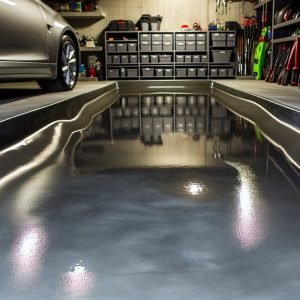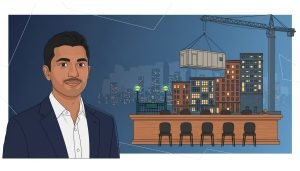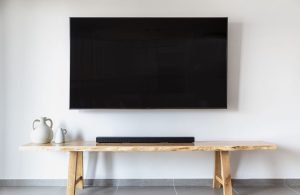Last Updated on October 30, 2025 by teamobn
Metal roofing has proven its worth over centuries, with lead and copper roofs on heritage buildings still standing strong after hundreds of years. These durable materials offer exceptional longevity, minimal maintenance requirements, superior fire resistance, and remarkable weather protection while maintaining aesthetic appeal.
The introduction of galvanization in the 19th century revolutionized the roofing industry, making metal roofing more durable, affordable, and versatile than ever before. Today, galvanized steel represents one of the most practical solutions for both new installations and roof restoration projects.
Contents
- 1 Why Galvanized Steel Excels as a Roofing Material
- 2 Common Challenges in Metal Roof Restoration
- 3 Advantages of Choosing Galvanized Steel for Restoration
- 4 Compliance with Modern Building Standards
- 5 Debunking Common Metal Roofing Myths
- 6 Maintenance Requirements for Galvanized Steel Roofing
- 7 Available Galvanized Steel Options for Restoration Projects
Why Galvanized Steel Excels as a Roofing Material
Exceptional Durability and Longevity
With proper maintenance and care, galvanized steel roofing systems typically last 15-20 years or more. The material’s robust construction makes it tough enough to withstand corrosion and rust, which are particularly problematic in regions experiencing alternating humid, snowy, and dry conditions.
The secret lies in galvanized steel’s protective zinc coating. While water pooling and moisture collection can severely damage other metal roofing types, this zinc barrier effectively prevents corrosion-related deterioration, ensuring long-term structural integrity.
Superior Safety and Security Features
Steel roofing’s fire-resistant properties make it the preferred choice for industrial buildings, banks, and other high-security facilities. Since both the roofing material and support systems are metallic, there’s significantly less risk of structural collapse during emergencies.
This safety advantage extends to commercial buildings with complex roofing structures that house temperature control systems, HVAC units, and ventilation equipment. Unlike traditional materials such as tiles or shingles that require frequent maintenance, galvanized steel roofing offers reliable protection with minimal upkeep.
Common Challenges in Metal Roof Restoration
Material and Cost Considerations
Metal roof restoration projects often present unexpected hurdles. Material costs have risen substantially over the years, and finding exact replacement materials can be challenging since older products may no longer be manufactured. This becomes particularly problematic when replacing damaged panels that need to match existing sections.
Technical Complexity and Specialized Skills
Even experienced roofers may struggle to identify and locate leaks in metal roofing systems. These roofs feature numerous potential failure points including fasteners, clips, joints, seams, and flashings, each requiring careful inspection and assessment.
Successful metal roof restoration demands specialized techniques including welding, sealing, and soldering. These skills require trained specialists who may not always be readily available when needed, potentially causing project delays.
Addressing Rust and Corrosion Damage
The primary driver behind most metal roof restoration projects is rust and corrosion damage. Proper restoration requires thorough surface cleaning, careful identification of damage causes and locations, and assessment of deterioration intensity before beginning any repair work.
Advantages of Choosing Galvanized Steel for Restoration
Versatility and Workability
Galvanized steel’s malleability makes it exceptionally easy to work with during installation and restoration projects. The material can be readily molded, cut, shaped, and formed into various configurations, from traditional shingles to modern metal panels, accommodating diverse design aesthetics.
Long-term Financial Benefits
While galvanized steel roofing may require higher upfront investment, it delivers excellent return on investment through reduced maintenance costs, exceptional durability, and environmental sustainability. The material essentially pays for itself over time through these ongoing savings.
Modern Aesthetic Appeal
Contemporary galvanized steel roofing provides sleek, modern finishes suitable for both commercial and residential applications. The material accepts paint, coatings, textures, and molding exceptionally well, offering unlimited design possibilities.
Weather Resistance and Structural Integrity
These roofing systems demonstrate remarkable resilience against extreme weather events, including severe storms, heavy snow, and hail damage. Their structural integrity remains intact even under the most challenging climate conditions.
Installation Efficiency
Galvanized steel roofs offer significant installation advantages since sheets come pre-coated and ready for assembly. This eliminates additional time and labor costs associated with on-site painting or coating applications, streamlining the entire restoration process.
Compliance with Modern Building Standards
Today’s building codes and regulations are considerably more stringent than those implemented decades ago. Older roofing systems may no longer meet current compliance requirements, making restoration with modern galvanized steel roofing an essential step toward regulatory adherence.
Debunking Common Metal Roofing Myths
Noise Concerns
Contrary to popular belief, modern galvanized steel roofing systems do not create excessive noise during rainfall or windy conditions. Advanced insulation techniques and improved design standards effectively minimize sound transmission, ensuring comfortable interior environments.
Lightning Attraction Misconceptions
The notion that metal roofs attract lightning is completely unfounded. Lightning strikes are determined by structure height and location, not roofing material. In fact, metal roofing can actually reduce fire risk if lightning does strike, since the material won’t ignite.
Maintenance Requirements for Galvanized Steel Roofing
Regular Cleaning Schedule
Maintaining galvanized steel roofing requires establishing a consistent cleaning routine for commercial, residential, or public buildings. Begin with thorough debris and dirt removal using hard brushes or brooms, followed by power-washing to complete the cleaning process. Avoid harsh detergents that could damage the protective coating.
Component Inspection and Maintenance
Regular examination of roof accessories is essential for identifying signs of rust, looseness, breakage, or other damage requiring immediate attention. Gutters and rainwater systems must remain clean and free of dead leaves, debris, and pest infestations.
Environmental Considerations
Properties with large trees in close proximity require additional attention to pruning and trimming of dead branches and leaves that could damage the roofing system or create maintenance issues.
Available Galvanized Steel Options for Restoration Projects
Standard Galvanized Steel
The most common option involves carbon steel coated with zinc, creating a smooth surface texture perfect for applying UV-resistant coatings, paint, or other protective materials.
Advanced Alloy Coatings
Alternative formulations include steel coated with aluminum alloy or aluminum-zinc alloy combinations. These products can be manufactured through hot-dip galvanization or electro-galvanization processes, each offering specific performance characteristics.
Pre-finished Options
For projects requiring specific aesthetic outcomes, pre-textured and pre-painted galvanized steel products are available in various finishes. Design options range from high-gloss surfaces to matte or dull metallic finishes, accommodating diverse architectural preferences and requirements.






